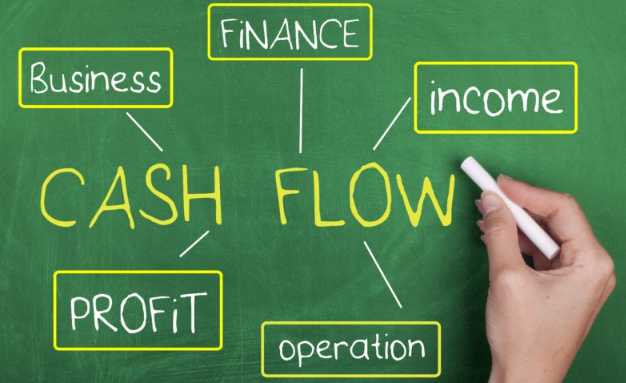Business cash flow problems can strike at any moment. Whether for business or even personal finances, if at the end of the month you end up owing more money than you took in, you could be in serious trouble.
There are two scenarios that we want to talk about in this post. The first is to remind the business coaches out there – don’t forget to manage the back-end of your business. You need to stay on top of your cash flow if you want to have a healthy enterprise.
The second case is for any entrepreneur who is curious about elevating their business’ financial wellness. You’ll find lots of helpful information here, and don’t forget that the right business coach with an accounting background can help you reach your financial goals, too!
In either case, here’s a quick guide to demonstrate the importance of managing your cash flow like a pro and avoiding common business cash flow problems that can cripple even the savviest business owners.
What is business cash flow?
Your business cash flow is an important financial metric for your enterprise. But what is it? Cash flow is a record of how much cash is coming in, and how much is going out of your business per month.
It’s important to note that this is not necessarily the same as the number of sales or invoices per month. For example, you might receive an invoice today, but it’s not due to be paid for 30 days. That means that the cash doesn’t have to leave your business account for 30 days. The same way you might invoice a client today and count that as a sale, but until you have the money in your business bank account, it’s not part of your cash flow.
There’s even a formula in accounting terms:
Cash Flow = Operating Cash Flow – Capital Expenditures.
There are a few new terms in there, so let’s look at each one individually.
Your operating cash flow is all the cash that your company exchanges through its operations, both through inflows and outflows. The inflows can be your sales, subscription revenue or some other way that your business makes money. Your outflows can be your costs of goods from vendors, delivery fees or other business expenses.
Your capital expenditures are your costs of doing business. These include your office spaces, equipment cost and cost of depreciation of those resources (unfortunately nothing lasts forever – which can be expensive).
Does that all seem too complicated? The general concept doesn’t have to be confusing. Let’s look at a simple scenario to drive the point home.
In the heatwave that comes with summer, a kid sets up a lemonade stand and sells refreshments to people in the neighbourhood. Cute!
The revenue the little boy makes goes into his piggy bank. Tempted by the thrill of the cash, the kid splurges on a new bicycle for himself. However, at the end of the month, he’s stuck in a pinch when it’s time to pay his parents back for the equipment required to set up his stand. In addition to the revenue made on sales, the juice, table, signs and other marketing materials all contribute to the kid’s business cash flow problems.
The point is this – whether you’re a child managing a lemonade stand or an owner operating an entire company, your business needs a reliable amount of cash on hand to be able to cover the costs of operation and growth. The most important part of that is to be able to know how much cash you will have in the bank at a point in time. Managing your cash flow and avoiding business cash flow problems doesn’t mean knowing how much is in your account right now, but planning for the future by keeping a record of when expenses are due.
Why should you care about business cash flow problems?
Inadequate cash flow management is commonly cited as one of the leading causes of small business failure.
Business cash flow problems, also referred to as negative cash flow, occurs when your financial outflow is larger than the amount of cash coming into your business. The occasional negative cash flow happens all the time. Smart business owners and clever accountants know that sometimes it’s necessary to spend more than you take in. However, operating with continuous negative cash flow can be a bad sign for your enterprise. It’s a sign of a poorly-run or unhealthy business because eventually, your debts will catch up to you and prevent you from keeping your doors open.
For starters, cash flow decides if you have the money to keep your business running. That includes paying your employees, purchasing marketing materials, and paying off your loans.
Related: Find the right staff for your business.
It also decides whether you can grow and improve your business. Expansion doesn’t come cheap, and if you don’t have a healthy cash flow, you’ll be stuck at the same size and output forever.
Perhaps most importantly, if you’re an owner, your business cash flow problems can dictate your salary. At the end of the month, if you have nothing left in your account to take home as your salary, then it can have severe consequences for your home life and livelihood. Your business cash flow is one of your business’ financial key performance indicators. What we mean by that is that monitoring your cash flow is essential in order for your business to succeed.
How do you plan your cash flow?
How can you keep track of all your financial commitments so you can keep your customers, suppliers, vendors, landlords and financiers happy?
Managing your cash flow is all about keeping up with the timing of revenues and expenses. It’s a problem that tricks so many business owners. To collect revenue from clients, you can’t be sure that they’ll always pay you as quickly as you’d like. Or, you might get invoiced for some costs of your business when you least expect it.
For instance, some costs might operate on a two-week cycle while others are monthly. Those competing schedules don’t always line up in your calendar. Or, some of your less-frequent costs may even occur on a quarterly or annual basis.
As you can imagine, it can be tricky to keep track of it all, especially if you try to do it from memory!
What’s the solution?
At Upskill Coach, we’re all about making plans and setting goals. The best advice we can give, then, is to create a plan to manage your cash flow and avoid business cash flow problems.
There are several different cash flow software options for businesses. If your business is new or not very complicated you can also use an Excel sheet. It doesn’t have to be complicated.
A good cash flow plan should include the following components:
A schedule to monitor your cash.
Some like to do this weekly or monthly or even quarterly. But especially when you’re starting out, the more frequent, the better.
A method to monitor your cash.
Even a simple solution like a spreadsheet on a computer can show your income and expenses every month. It can be a great way to visualise and plan for your business. Remember to consider your payment terms when planning this, if your clients have 30 days to pay an invoice that will affect when the money is in your business account.
A list of your paid services.
You have to keep track of services that are paid for annually, quarterly and monthly. Note them down all in one place so you can see the relationship between them and know when they are due and how much it is.
Consideration of how to cut costs.
Do you still need all the services, rent, subscriptions or insurance that you pay for regularly? Think carefully about what costs you can ditch.
Related: How to improve your time management.
A tight receivables process.
You should make it easier for your customers to pay you. Do this by setting up an online payment option, provide deposits on their purchases, or use speedy electronic fund transfers. You can even offer discounts to customers who pay upfront. Whatever it takes to tighten up your invoicing process! Lastly, limit the amount of credit or deadlines that you extend to your clients. It’s okay to be kind to your customers, but giving them too much freedom to delay paying you will only increase your cash flow risk.
Lease instead of purchase.
Leasing equipment, computers or other business essentials might be a better way to spread out your cash commitments on your purchases rather than tying up all your cash in one go.
And, as is always essential for a plan, you need to set up a before-and-after image of your cash flow. Start by figuring out what your current cash flow is. Then, make a goal for what you’d like it to be in six months or a year. Setting that concrete goal will help you focus on the task and creates accountability so you can be motivated to reach it.
Managing even during a crisis
A business always faces challenges. Sometimes an accountant might quit, or a recession hits the economy. In 2020, there’s even a global pandemic to deal with – COVID-19.
A cash flow plan can be a huge difference-maker when it comes to staying on top of your business transactions even when you face tough challenges. Doing so will set you apart from other businesses and allow your business to grow and flourish. Get started on your cash flow today, or schedule a call with one of our business coaches to help.











